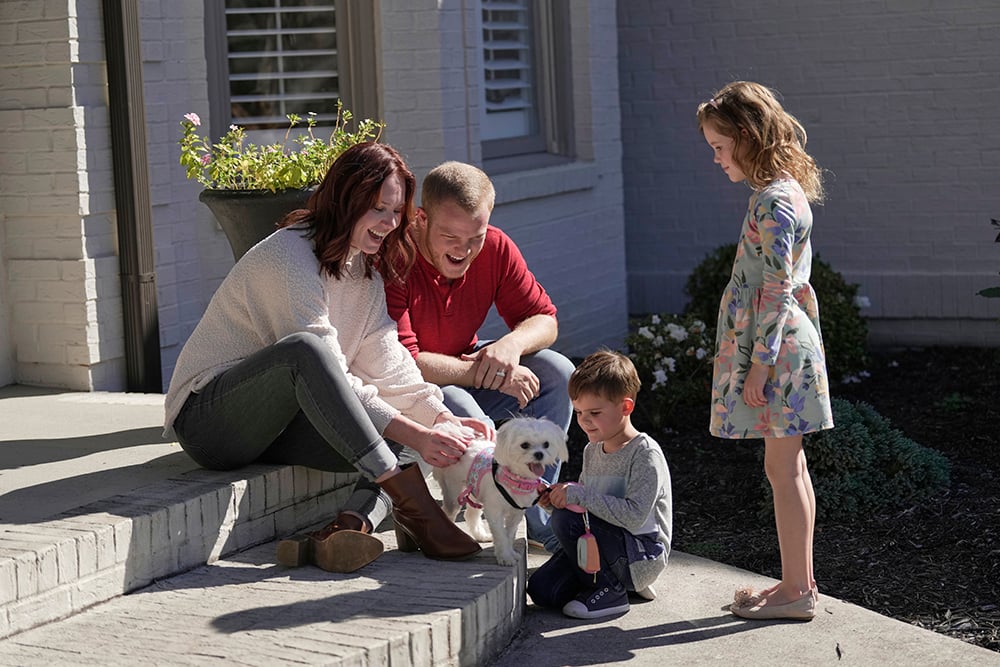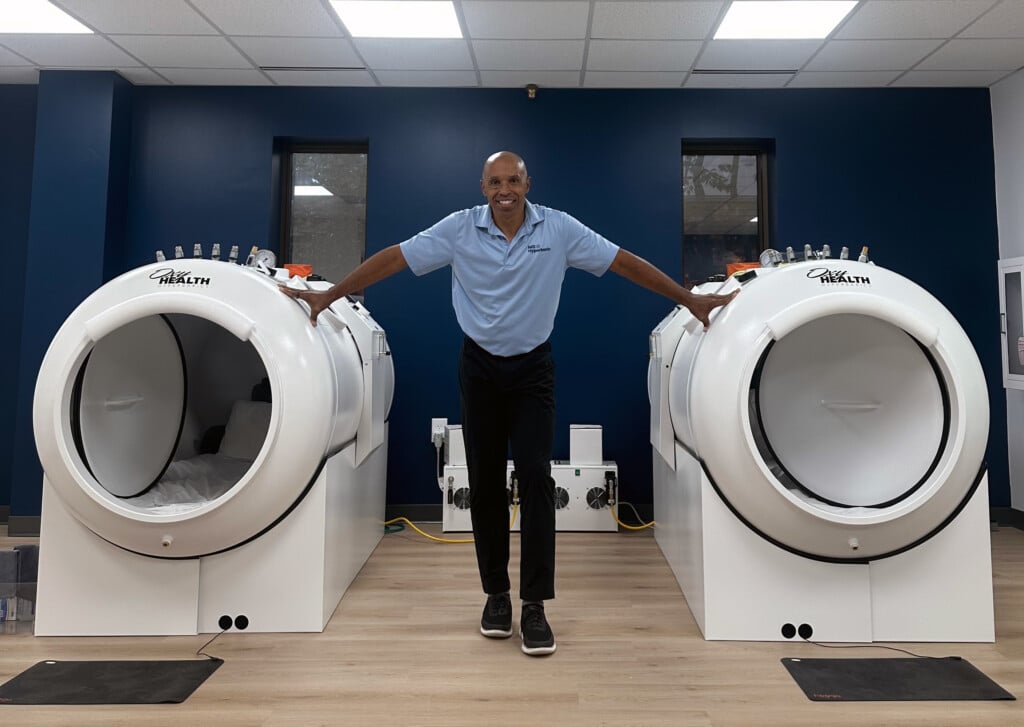Trane’s Fall Home Maintenance Guide: Preparing Your Charlotte Home for Winter Weather
In Partnership With Trane

As autumn leaves begin to change colors across Charlotte, homeowners know that winter weather isn’t far behind. With the holidays approaching, Santa isn’t the only one making a list and checking it twice. For Queen City residents, fall represents the crucial window for preparing homes to handle the temperature rollercoaster and extended indoor living that comes with our unpredictable winter months.
You know the drill – one day it’s 65 degrees, the next it’s 25 with a surprise ice storm. This variability puts extra stress on your home’s systems, making proper preparation essential for comfort, efficiency, and cost savings throughout the heating season.
By following these essential fall maintenance steps tailored for Charlotte homeowners, you can ensure your home operates efficiently all winter while avoiding costly emergency repairs when the weather turns.
Essential Fall Home Maintenance Tips
Tip #1: Test Your Home’s Indoor Air Quality (IAQ)
As Charlotte residents prepare to close windows and spend more time indoors, monitoring your home’s air quality becomes critical, especially with our notoriously high fall pollen counts. Improving your indoor air quality as flu season approaches can help minimize virus transmission and keep your loved ones healthy during winter months.
Start by testing your home’s indoor air quality to assess what airborne particles may be negatively affecting the air you’re breathing. Consider investing in an indoor air quality monitoring device that measures temperature, humidity, CO2, fine particulate matter, and volatile organic compounds. For a comprehensive assessment, contact your local Trane Comfort Specialist™ to test your home’s air quality and recommend solutions like whole-home air cleaners that integrate with your existing HVAC system.
Tip #2: Check Your Home’s Insulation for Winter Readiness
If your attic or crawlspace isn’t properly insulated, your heating system must work harder during our variable fall and winter months to maintain consistently comfortable temperatures. With frequent temperature swings, your system cycles on and off more often, increasing energy costs. The longer your system works, the more it costs you in energy bills — this is particularly important as heating expenses typically represent the largest portion of winter utility costs.
Homes built in the 1970s or earlier should be checked by an expert, as insulation quality has improved dramatically since then. Additionally, certain types of insulation can settle after installation, making annual inspection a best practice for maintaining efficiency. Proper insulation works hand-in-hand with your HVAC system, reducing the workload during those occasional deep freezes and ice events while ensuring consistent comfort throughout your home.
Tip #3: Set Your Thermostat to the Proper Fall Temperature
Smart thermostat management becomes crucial as outdoor temperatures begin their familiar dance across the area. You know how it goes – mild fall days followed by sudden arctic blasts. Adjusting your thermostat when headed out for dinner, off to work, or traveling represents a good first step toward saving on energy bills while ensuring comfort when you return home.
The ideal fall setting ranges between 68-78 degrees Fahrenheit, allowing your system to operate efficiently while maintaining comfort during our notoriously variable weather patterns. If you don’t already have one, consider upgrading to a smart thermostat such as the Trane XL824 Thermostat, which offers an easy-to-use, set-it-and-forget-it solution for reducing energy expenses throughout fall and winter.
Smart thermostats learn your family’s patterns and automatically adjust temperatures based on occupancy, weather conditions, and time of day. This technology proves particularly valuable when temperatures can swing 30-40 degrees within 24 hours – something we know all too well here.
Tip #4: Assess and Control Humidity Levels
Maintaining proper humidity levels becomes critical as Charlotte homes transition from cooling to heating season, especially given the area’s naturally humid climate. The ideal humidity range of 35-60 percent helps mitigate indoor air quality problems while ensuring comfort once temperatures drop and heating systems activate during Charlotte’s colder periods.
Mold, dust mites, and other air pollutants tend to thrive outside this optimal range, and your family’s natural immune systems can be compromised when indoor air becomes too dry — a common problem during heating season. Charlotte’s winter heating can quickly dry out indoor air despite the area’s natural humidity, leading to respiratory irritation, static electricity, and damage to wooden furniture and flooring.
The best way to control humidity during heating season is through monitoring with a reliable smart thermostat and managing with a whole-home humidification system. These units integrate with your existing ductwork to add appropriate moisture levels throughout your entire home, rather than just single rooms.
Tip #5: Schedule Professional Fall Furnace Maintenance
Before Charlotte’s unpredictable winter weather arrives in earnest, ensure your heating system receives the professional attention it needs for reliable operation throughout the cold months and potential ice storms ahead. While changing air filters regularly helps keep your furnace or heat pump in good condition, comprehensive professional maintenance provides peace of mind during peak heating season and severe weather events.
Professional fall maintenance includes checking all system components, cleaning essential parts, testing safety features, and identifying potential problems before they become expensive emergency repairs. Your local Trane Comfort Specialist™ can perform comprehensive system checks tailored to your specific heating equipment and Charlotte’s unique climate challenges.
For maximum reliability during Charlotte’s winter weather and occasional ice storms, schedule preventative HVAC maintenance before temperatures drop consistently below freezing. This proactive approach helps avoid service calls during the coldest days and severe weather when heating system failures cause the greatest discomfort and expense.
Preparing for Peak Heating Season
Set yourself up for success by completing these preparation steps before Charlotte’s unpredictable winter weather arrives. Address any minor issues now while weather remains mild and HVAC technicians maintain normal availability. Consider Charlotte’s variable heating patterns when programming smart thermostats — prepare systems to maintain comfort during sudden cold snaps and ice storms while optimizing efficiency during the area’s frequent mild winter days.
By following these essential fall preparation steps, you can relax knowing your home is properly prepared for Charlotte’s variable winter weather while operating at peak efficiency throughout the heating season.
For more information surrounding fall HVAC maintenance, go to www.trane.com/residential or contact your local Trane dealer.





